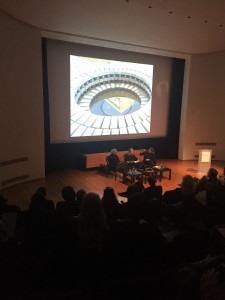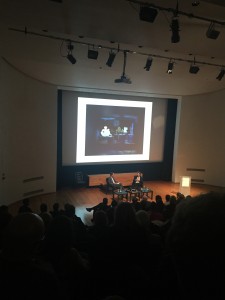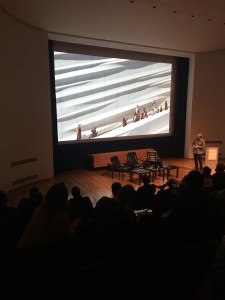Frieze London Art and Architecture conference, October 2016
We had a fascinating day at Frieze’s first ever Art and Architecture conference on Tuesday. Key speakers from the industry spoke on topics such as ‘What makes a great space for art?’ and ‘How do the needs of public museums differ from those of commercial galleries, private museums and homes?’. Here are some of our favourite moments:
Artist Gabriel Orozco and Stephanie Macdonald of 6a architects in conversation with Kirsty Bell: talking here about the newly-opened garden, designed by Orozco with support from 6a architects, at the South London Gallery in Peckham. Gabriel explained that he was motivated by the space – formerly a bombsite – coming back to life. His use of reclaimed bricks creates a platform which nature and neighbourhood will now take over. There is a corridor directly from the garden leading to the housing estate behind it.
Architect Annabelle Selldorf in conversation with Matthew Slotover, Co-founder of Frieze: talking here about Annabelle’s collaborations with Gagosian’s Picasso shows. Annabelle commented on the work she had done on domestic projects: “Clients know more than architects do because it’s theirs”. She explained that a state of discomfort is where client and architect do best. By this she means “understanding layers, hierarchies and distinctions – the pairing of contradictory elements and the intuitive recognition of that”.
Architect Craig Dykers, Founding Partner of Snøhetta: talking here about his expansion of the Museum of Modern Art in San Francisco (completed in May 2016). His view was that a museum must serve its surroundings. He took inspiration from this maritime city and the sea mists that regularly engulf it, reflected here in the panels which clad the new section of the museum. He also decided to add new entrances from all the alleyways surrounding the building, leading to the regeneration of the area as a whole. He acknowledged that great buildings can only come from great clients. Their instructions can translate into “things of worth that go far beyond our capacity to understand the value of time and human endeavour”.



